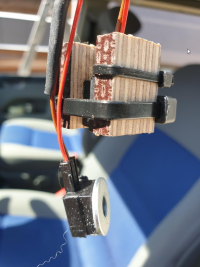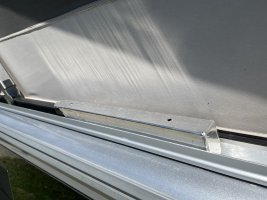J
Jaka Rovan
Hi everyone!
I finished my conversion this weekend and wanted to share some thoughts with you.
Long story short, just follow Dumé's instructions (with a pinch of salt of course) and you'll be fine!
A few figures:
Second, go for the conversion guys if you are not comfortable about your roof hydraulics. If anyone can use my experience gained through my conversion, I will be happy to help!
Best, Jaka



I finished my conversion this weekend and wanted to share some thoughts with you.
Long story short, just follow Dumé's instructions (with a pinch of salt of course) and you'll be fine!
A few figures:
- Cost of material approximately 1500€ for all of the original VW parts bought with the help of my neighbour's garage, stainless steel bolts, washers and nuts, sealant/glue, etc.
- It took me around 12 hours of work including building the support structures to hold my roof up, removing a broken rusty bolt, degreasing the roof channels because of the oil leak (thankfully the canvas was not affected), electrical works, sealing/glueing everything, etc.
- I'm sure it can be done faster, but I was working in the afternoons after work in front of my garage, so could only work somewhere between 17.30-20.00.
- Build two strong support structures, one around 400mm high, and the other around 1000mm high to hold your roof while you work on it. It is best to have both of them ready and swap them as needed.
- I had to lower the roof every day after I finished to be able to drive to work the next day (my wife needed the other car the whole week which rarely happens - #murphy) so the first day had to include the removal of the hydraulics+installation of the locking mechanism.
- My wife was the positioning engineer for the support structures while I held the roof up
- Before the conversion, one of the cylinders on our Cali failed completely. To be able to lift the roof and start with the work, I had to depresurise the system, by turning the emergency screw on the hydraulic pump. Works without issues, just browse this forum for instructions if you do not know where it is.
- The latest update of the Dumé's manual suggests disabling the roof function on the control unit and bypassing the sensors for the roof position this way. Our Cali is 2005 and does not support this option. I had to bypass the sensors to let my van believe that the roof was closed.
- If I am not mistaken, the sensors installed are Hall sensors. The control unit receives analogue signal, according to my measurements 2-3mA when a metal item is close to the sensor and 13mA when it is not. This is quite a nicely engineered concept since there are no false positive or negative inputs. The values that the control unit »reads« need to be inside a certain threshold for the unit to read it as open or closed. Anything else is a broken sensor and a returned error.
- (Thereis a nice thread about the sensor here: https://vwcaliforniaclub.com/threads/roof-code-1000.34527/post-553895)
- I plan to replace the sensors with suitable resistors to tidy the whole thing, but we are off to Corsica on Friday, so the temporary solution will have to do for now.
- If anyone is interested, I can post how that went as well
Second, go for the conversion guys if you are not comfortable about your roof hydraulics. If anyone can use my experience gained through my conversion, I will be happy to help!
Best, Jaka






















